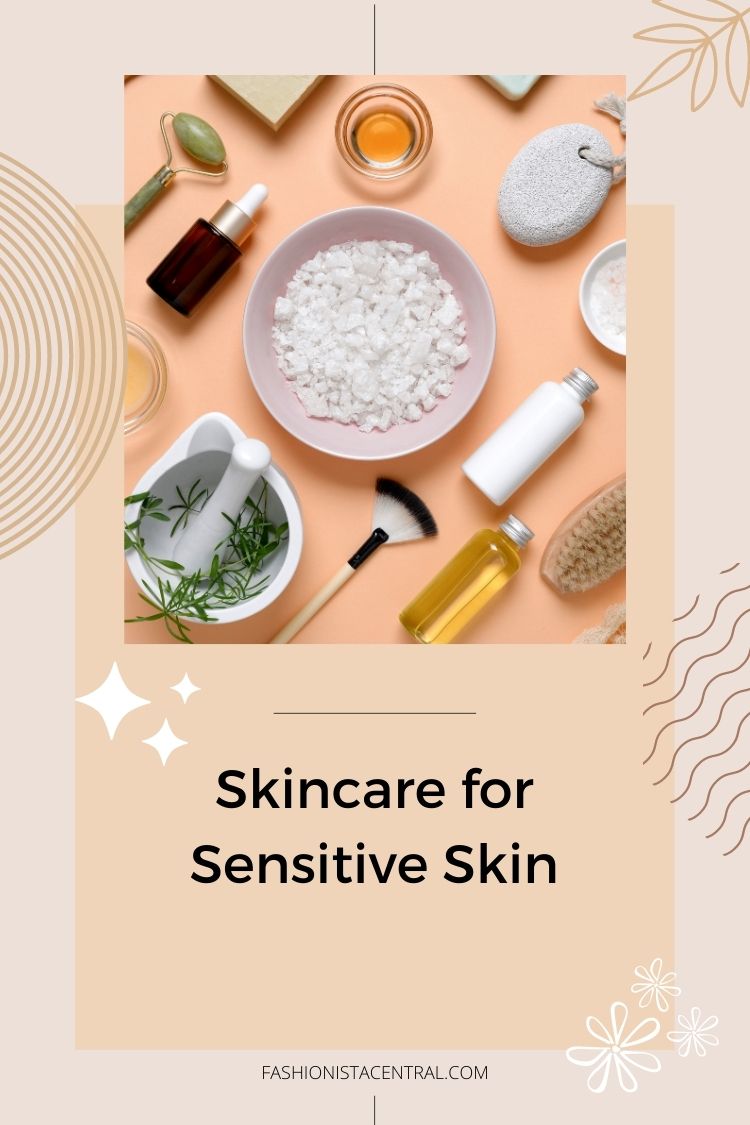Are you tired of dealing with skin irritations caused by commercial deodorants? Do you have sensitive skin that requires a more gentle approach? Look no further! In this article, we will guide you through the world of DIY natural deodorants, specifically designed for sensitive skin.
By creating your own homemade deodorants, you can say goodbye to harsh chemicals and hello to a more natural and soothing alternative. With our easy-to-follow homemade deodorant recipes, you’ll be able to customize your deodorant to suit your unique needs and preferences. Plus, you’ll have peace of mind knowing exactly what ingredients are going onto your skin.
So, whether you have experienced discomfort in the past or simply want to reduce your exposure to potentially harmful ingredients, our DIY natural deodorant recipes are perfect for you. Let’s take a closer look at how you can create your own gentle and effective deodorants right at home.
Get ready to embark on a journey towards healthier underarms and discover the power of DIY natural deodorants for sensitive skin. Let’s dive in!
Understanding the Benefits of Natural Deodorants
Before diving into the recipes, it’s important to understand why natural deodorants are a great choice, especially for those with sensitive skin. Natural deodorants offer several benefits that make them a healthier and more sustainable alternative to conventional options.
Gentle on the Skin
Natural deodorants are formulated with gentle ingredients that are less likely to cause irritation or allergic reactions. Unlike traditional deodorants that often contain harsh chemicals and synthetic fragrances, natural deodorants prioritize the use of non-toxic and hypoallergenic ingredients.
Free of Harmful Chemicals
One of the primary advantages of natural deodorants is their exclusion of harmful chemicals commonly found in commercial options. Ingredients such as aluminum, parabens, phthalates, and artificial fragrances are known to have potential health risks. By using natural deodorants, you can avoid exposing your skin to these harmful substances.
Sweat-Friendly
Natural deodorants don’t aim to prevent sweating entirely. Instead, they work to neutralize odor-causing bacteria while allowing your body to perspire naturally. Sweating is a natural and important bodily function that helps regulate body temperature and cleanse the skin. Natural deodorants respect this process while effectively combatting odor.
Environmentally Conscious
Choosing natural deodorants also aligns with eco-friendly values. Many conventional deodorants come in plastic packaging and contribute to pollution. On the other hand, natural deodorants often use sustainable packaging materials and are produced in a more environmentally responsible manner.
Non-Toxic Alternatives
In addition to the benefits mentioned above, natural deodorants offer a wide range of non-toxic alternatives that can be just as effective as their chemical-laden counterparts. From baking soda and arrowroot powder to essential oils and shea butter, there are countless natural ingredients that can help keep you feeling fresh and confident throughout the day.
“Using natural deodorants not only benefits your skin but also supports a healthier planet. By making the switch, you can prioritize your well-being while reducing your environmental impact.”
Understanding the benefits of natural deodorants is the first step towards embracing a healthier and more sustainable deodorant routine. In the following sections, we will explore essential natural deodorant ingredients, provide easy-to-follow DIY recipes, and address common issues to help you create effective, personalized deodorants for your sensitive skin needs.
Key Ingredients for Sensitive Skin-Friendly Deodorant
When it comes to creating a deodorant suitable for sensitive skin, the choice of ingredients plays a crucial role. By selecting natural deodorant ingredients known for their soothing and nourishing properties, you can ensure that your homemade deodorant is gentle on your underarms while effectively neutralizing odor.
Here are some key ingredients to consider for your sensitive skin-friendly deodorant:
1. Baking Soda
Baking soda, also known as sodium bicarbonate, is a popular ingredient in natural deodorants due to its odor-neutralizing properties. This alkaline compound helps absorb moisture and control bacteria that cause underarm odor.
2. Arrowroot Powder
Arrowroot powder, derived from the root of the arrowroot plant, is a natural thickening agent that helps absorb moisture. It is gentle on sensitive skin and provides a smooth texture to your homemade deodorant.
3. Coconut Oil
Coconut oil is not only moisturizing but also antimicrobial, making it an excellent ingredient for sensitive skin-friendly deodorants. It helps eliminate bacteria and keeps your underarms feeling fresh throughout the day.
4. Shea Butter
Shea butter is a rich and nourishing ingredient that moisturizes and soothes the delicate underarm skin. It helps prevent dryness and irritation, making it ideal for sensitive skin.
5. Essential Oils
Essential oils not only add a pleasant scent to your deodorant but also offer additional benefits. Some essential oils, such as tea tree oil and lavender oil, have antimicrobial properties that help fight odor-causing bacteria.
By combining these natural ingredients, you can create a deodorant that is gentle, effective, and tailored to your sensitive skin’s needs.

| Natural Deodorant Ingredient | Benefits |
|---|---|
| Baking Soda | Neutralizes odor and controls bacteria |
| Arrowroot Powder | Absorbs moisture and provides a smooth texture |
| Coconut Oil | Moisturizes and eliminates bacteria |
| Shea Butter | Nourishes and soothes sensitive skin |
| Essential Oils | Adds fragrance and offers antimicrobial properties |
Easy Homemade Deodorant Recipes for Sensitive Skin
If you have sensitive skin, commercial deodorants can often cause irritation or discomfort. The good news is that you can easily create your own gentle and effective deodorant at home. These homemade deodorant recipes are specifically tailored for sensitive skin, using easily accessible ingredients that you may already have in your pantry. Get ready to say goodbye to skin irritations and hello to fresh and odor-free underarms.
Recipe 1: Baking Soda and Coconut Oil Deodorant
This simple recipe combines the odor-neutralizing properties of baking soda with the moisturizing benefits of coconut oil. The ingredients you need are:
- 1/4 cup baking soda
- 1/4 cup coconut oil
- 10 drops of your favorite essential oil (optional for fragrance)
Instructions:
- Melt the coconut oil in a microwave-safe bowl.
- Add the baking soda and mix well until you have a smooth paste.
- If desired, add a few drops of essential oil for fragrance (lavender, tea tree, or lemon work well).
- Pour the mixture into a small jar or container.
- Allow the deodorant to cool and solidify before use.
Apply a small amount to your underarms using your fingertips or a clean cloth. This natural deodorant will effectively neutralize odors while keeping your skin moisturized and fresh.
Recipe 2: Shea Butter and Arrowroot Powder Deodorant
This recipe combines the nourishing properties of shea butter with the absorbent qualities of arrowroot powder. Here’s what you’ll need:
- 1/4 cup shea butter
- 2 tablespoons arrowroot powder
- 1 tablespoon baking soda
- 10 drops of your preferred essential oil (optional for scent)
Instructions:
- Melt the shea butter in a double boiler or microwave-safe bowl.
- Add the arrowroot powder and baking soda to the melted shea butter, stirring until well combined.
- If desired, add a few drops of essential oil for fragrance.
- Pour the mixture into a container and allow it to cool and solidify.
- Apply a small amount to your underarms as needed.
This homemade deodorant recipe is gentle on sensitive skin while effectively combating odor. The shea butter provides nourishment, while the arrowroot powder helps absorb moisture, keeping you feeling fresh throughout the day.
“Creating your own deodorant allows you to customize the ingredients to suit your skin’s unique needs.”
Recipe 3: Tea Tree and Witch Hazel Deodorant Spray
If you prefer a deodorant in spray form, this recipe is perfect for you. Tea tree oil is known for its antibacterial properties, while witch hazel helps soothe and tone the skin. Here’s what you’ll need:
- 1/4 cup witch hazel
- 10 drops tea tree essential oil
- 10 drops of your choice of essential oil for fragrance (optional)
Instructions:
- In a spray bottle, combine the witch hazel and tea tree essential oil.
- If desired, add a few drops of your preferred essential oil for fragrance.
- Screw on the spray bottle cap and shake well to ensure the ingredients are thoroughly mixed.
- Spray a fine mist onto your underarms and let it dry. Reapply as needed throughout the day.
This deodorant spray is not only refreshing but also effective at neutralizing odor. The tea tree oil fights bacteria, leaving you feeling clean and confident.
Comparison of Homemade Deodorant Recipes
| Recipe | Main Ingredients | Benefits |
|---|---|---|
| Recipe 1 | Baking Soda, Coconut Oil | Odor-neutralizing, moisturizing |
| Recipe 2 | Shea Butter, Arrowroot Powder | Nourishing, moisture-absorbing |
| Recipe 3 | Witch Hazel, Tea Tree Oil | Antibacterial, soothing |
With these easy homemade deodorant recipes, you can confidently embrace a natural and sensitive skin-friendly alternative. Feel free to experiment with different essential oils to find your favorite scent. Say goodbye to harsh chemicals and hello to fresh and healthy underarms.
DIY Deodorant for Allergy-Prone Skin
For individuals with allergy-prone skin, finding a deodorant that doesn’t cause irritation can be challenging. Allergies to various ingredients commonly found in commercial deodorants can lead to discomfort and skin reactions. In this section, we will provide recipes that are specifically formulated for allergy-prone skin. These gentle and soothing deodorants will keep you feeling fresh without any unwanted reactions.
One key consideration when creating a DIY deodorant for allergy-prone skin is to avoid potential allergens such as fragrance oils, artificial colors, and harsh chemicals. Instead, we will focus on natural ingredients known for their hypoallergenic properties and skin-soothing benefits.
An excellent base ingredient for allergy-prone skin-friendly deodorants is arrowroot powder. It has a gentle, absorbent quality that helps keep your underarms dry without causing irritation. Combined with coconut oil and shea butter, this recipe provides a moisturizing and nourishing effect to soothe sensitive skin.
| DIY Deodorant for Allergy-Prone Skin Recipe |
|---|
|
Instructions:
- In a heat-safe bowl, combine the arrowroot powder, coconut oil, and shea butter.
- Melt the mixture in a microwave or double boiler until the ingredients are fully combined.
- Add baking soda and lavender essential oil if desired, and mix well.
- Pour the mixture into a clean and empty deodorant container or a small glass jar.
- Allow the deodorant to cool and solidify before use. It may take a couple of hours.
- Apply a small amount of the DIY deodorant to clean underarms, and enjoy feeling fresh and protected all day.
This DIY deodorant for allergy-prone skin is free from common allergens and utilizes natural ingredients to provide effective odor protection. Remember to perform a patch test before using it all over your underarms to ensure you don’t have any individual allergies or sensitivities to the ingredients.
Always consult with a healthcare professional if you have any concerns or known allergies. They can guide you on what ingredients are safe for your particular sensitivities.
Chemical-Free Deodorant Recipes
Many store-bought deodorants contain harmful chemicals that can irritate sensitive skin. If you’re looking for a safe and effective alternative, creating your own chemical-free deodorant is the way to go. By using natural ingredients, you can avoid potential irritants and enjoy the benefits of a non-toxic deodorant.
Here are a few simple and effective chemical-free deodorant recipes that you can easily make at home:
- Coconut Oil and Baking Soda Deodorant: Mix 1/4 cup of coconut oil, 1/4 cup of baking soda, and 1/4 cup of arrowroot powder. Add a few drops of your favorite essential oil for a pleasant fragrance. Store in a small jar and apply a pea-sized amount to clean underarms.
- Shea Butter and Tea Tree Oil Deodorant: Melt 2 tablespoons of shea butter and mix it with 2 tablespoons of arrowroot powder, 2 tablespoons of baking soda, and 10 drops of tea tree oil. Pour the mixture into a small container and allow it to solidify. Apply as needed.
- Witch Hazel and Lavender Deodorant Spray: Combine 1/4 cup of witch hazel, 1/4 cup of distilled water, 10 drops of lavender essential oil, and 5 drops of peppermint essential oil. Pour the mixture into a spray bottle and shake well before each use. Spray onto clean underarms.
These chemical-free deodorant recipes are not only gentle on your skin but also effective in neutralizing odor. Give them a try and experience the benefits of non-toxic deodorant alternatives.
Effective Natural Deodorant Ingredients
Now that you understand the benefits of natural deodorants and the key ingredients for sensitive skin-friendly deodorants, let’s explore the effective natural deodorant ingredients that not only neutralize odor but also provide nourishing benefits to your underarms. By incorporating these ingredients into your homemade deodorant recipes, you can create a personalized and gentle solution for your sensitive skin.
Essential Oils
Essential oils are not only known for their pleasing scents but also for their antibacterial and antimicrobial properties, making them ideal natural deodorant ingredients. Here are a few essential oils that work wonders in keeping odors at bay:
- Lavender oil: Known for its calming scent, lavender oil also possesses natural antiseptic properties.
- Tea tree oil: With its powerful antibacterial properties, tea tree oil effectively fights odor-causing bacteria.
- Lemon oil: This refreshing oil has both antiseptic and deodorizing qualities, leaving you feeling fresh all day.
Herbal Extracts
Herbal extracts not only add a pleasant fragrance to your homemade deodorants but also contribute to their effectiveness. Here are some popular herbal extracts to consider:
- Chamomile extract: Known for its anti-inflammatory properties, chamomile extract soothes the skin and reduces irritation.
- Calendula extract: This extract has soothing and healing properties, making it a great addition for sensitive skin.
- Green tea extract: Packed with antioxidants, green tea extract helps protect the skin while neutralizing odors.
Baking Soda
Baking soda, also known as sodium bicarbonate, is a common ingredient in natural deodorants. Its alkaline nature helps neutralize odor-causing bacteria while keeping your underarms dry. However, it’s important to note that some individuals with sensitive skin may experience irritation from baking soda. If this is the case for you, consider using alternative ingredients or reducing the amount of baking soda in your recipes.
Arrowroot Powder
Arrowroot powder is a natural starch that helps absorb moisture and keep your underarms dry throughout the day. It is gentle on the skin and serves as an excellent alternative to traditional antiperspirants that may contain harmful chemicals.
Coconut Oil
Coconut oil is a versatile ingredient that not only moisturizes the skin but also possesses antimicrobial properties. It helps prevent the growth of odor-causing bacteria while keeping your underarms soft and nourished.
| Natural Deodorant Ingredients | Benefits |
|---|---|
| Essential Oils | Antibacterial and antimicrobial properties Pleasant fragrance Calming and refreshing scents |
| Herbal Extracts | Soothing and healing properties Anti-inflammatory benefits Adding pleasant fragrance |
| Baking Soda | Neutralizes odor-causing bacteria Keeps underarms dry May cause irritation in some individuals |
| Arrowroot Powder | Natural starch for moisture absorption Gentle on the skin Alternative to chemical-laden antiperspirants |
| Coconut Oil | Moisturizes the skin Antimicrobial properties Nourishes and softens underarms |
By incorporating these effective natural deodorant ingredients into your homemade recipes, you can create a personalized deodorant that is gentle, effective, and free from harmful chemicals. Experiment with different combinations to find the perfect blend that works best for your sensitive skin.
Tips for Using DIY Natural Deodorants
Using DIY natural deodorants requires some adjustments compared to store-bought options. To ensure you get the best results from your homemade deodorant, here are some useful tips and techniques:
- Start with a clean slate: Before applying your homemade deodorant, make sure to thoroughly cleanse your underarms to remove any residual product or bacteria.
- Apply a pea-sized amount: Homemade deodorants are highly concentrated, so a little goes a long way. Use a pea-sized amount and spread it evenly on your underarms.
- Allow time to absorb: Give your homemade deodorant a few minutes to absorb into your skin before getting dressed. This will help prevent any potential staining on clothing.
- Store in a cool place: Natural deodorants can be sensitive to heat and may melt or lose their effectiveness if not stored properly. Keep your homemade deodorant in a cool and dry place.
- Be patient: It may take a couple of weeks for your body to adjust to the natural ingredients in the homemade deodorant. Give it time, and you’ll begin to notice its efficacy.
- Consider reapplication: If you have an active lifestyle or tend to sweat more, you may want to reapply your homemade deodorant throughout the day to maintain freshness.
Expert Tip
For extra freshness and a boost of scent, try adding a few drops of your favorite essential oil to your homemade deodorant recipe. Just be sure to choose essential oils that are safe for topical use and suitable for sensitive skin.
Using DIY natural deodorants can be a rewarding and effective way to manage odor while prioritizing the health of your sensitive skin. With these tips and techniques, you’ll be well-equipped to make the most out of your homemade deodorant.
| Common Mistakes to Avoid | How to Overcome Them |
|---|---|
| Using too much deodorant | Start with a small amount and gradually increase if needed |
| Not fully melting the ingredients | Ensure all ingredients are properly melted and blended together |
| Not adjusting the recipe for climate or season | Modify the recipe by using more solid ingredients in warmer climates or seasons |
| Not giving the deodorant enough time to work | Be patient and allow a few weeks for your body to adjust to the natural deodorant |
Troubleshooting Common Issues
Sometimes, using homemade deodorants can lead to common issues such as excessive sweating or skin irritation. Don’t worry, we’ve got you covered! We will address these problems and provide effective troubleshooting suggestions so you can enjoy the benefits of natural deodorants without any setbacks.
Issue: Excessive Sweating
If you find that you’re still experiencing excessive sweating, it may be due to your body’s adjustment to the new deodorant. This is normal and can take some time to regulate. In the meantime, try the following:
- Apply the deodorant more generously, ensuring complete coverage.
- Consider using an absorbent powder, such as cornstarch or arrowroot powder, before applying the deodorant.
- Wear loose-fitting clothing made from breathable fabrics to allow better airflow.
Issue: Skin Irritation
If you experience skin irritation after using homemade deodorants, it may be due to sensitivity to certain ingredients. Here’s what you can do:
- Reduce or eliminate essential oils from your deodorant recipe, as they can be irritants for some individuals.
- Perform a patch test on a small area of your skin before applying the deodorant to your underarms.
- Consider using a less baking soda-heavy recipe, as baking soda can cause irritation for some people.
- Soothe irritated skin with aloe vera gel or a gentle, natural moisturizer.
Remember, everyone’s body is unique, so finding the perfect homemade deodorant recipe may require some trial and error. Don’t be discouraged if you encounter these issues initially. With patience and the right adjustments, you’ll discover a natural deodorant that works perfectly for your sensitive underarms.
Continue reading to explore more helpful tips and techniques for using DIY natural deodorants in the following sections.
DIY Natural Deodorant Storage and Shelf Life
Proper storage and understanding shelf life are vital to ensure the effectiveness and longevity of your DIY natural deodorants. By following these tips, you can maximize the benefits of your creations and enjoy long-lasting freshness.
Storing Your Homemade Deodorants
When it comes to storing your homemade deodorants, it’s important to keep them in a cool, dry place. Exposing your deodorant to excessive heat or moisture can cause the ingredients to degrade and lose their effectiveness.
Consider storing your homemade deodorant in airtight containers, such as glass jars or BPA-free plastic containers. These containers help protect the deodorant from humidity and prevent the absorption of unwanted odors.
If you prefer a stick deodorant, you can pour the melted deodorant mixture into empty deodorant tubes or push-up containers. Make sure to let the mixture cool and solidify completely before using or storing.
Determining Shelf Life
The shelf life of your DIY natural deodorant can vary depending on the ingredients used. Here are general guidelines for determining the shelf life of common natural deodorant ingredients:
| Ingredient | Shelf Life |
|---|---|
| Coconut oil | 2-3 years |
| Shea butter | 1-2 years |
| Arrowroot powder | 2-3 years |
| Baking soda | 2-3 years |
| Cornstarch | 2-3 years |
| Essential oils | 1-2 years |
It’s important to note that the shelf life can be extended by adding natural preservatives like vitamin E oil or grapefruit seed extract. These preservatives help prevent the growth of bacteria and increase the longevity of your homemade deodorant.
Remember to regularly check the texture, smell, and color of your deodorant. If you notice any changes, such as a rancid smell or mold growth, discard the product and make a fresh batch.
By storing your homemade deodorants properly and understanding their shelf life, you can ensure that they remain effective and provide long-lasting freshness.
Conclusion
Creating DIY natural deodorants for sensitive skin can be both rewarding and empowering. By using the right ingredients and recipes, you can customize a gentle and effective solution that perfectly suits your unique needs. Say goodbye to commercial deodorants filled with harsh chemicals and embrace the power of natural alternatives for healthier underarms.
Homemade deodorants offer a plethora of benefits for sensitive skin. They are free from irritating chemicals, artificial fragrances, and pore-clogging ingredients, allowing your skin to breathe and reducing the risk of irritation. Plus, DIY natural deodorants are often cost-effective and eco-friendly, as you have full control over the ingredients and packaging.
When making your own natural deodorants, remember to experiment and find the combination of ingredients that works best for you. Consider using soothing ingredients like coconut oil, baking soda, arrowroot powder, and essential oils to create a mild and odor-neutralizing fragrance. Customize your homemade deodorant by experimenting with different scents and textures until you find your perfect match.
Take control of your personal care routine by opting for DIY natural deodorants. With a little creativity and some simple ingredients, you can create a deodorant that is gentle, effective, and tailored to your sensitive skin. Enjoy the peace of mind that comes with knowing exactly what goes into your deodorant while keeping your underarms fresh and odor-free.







